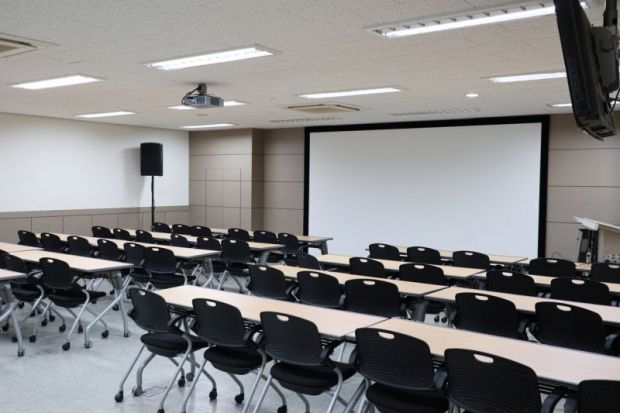US college leaders are putting on a brave face about the autumn semester, with growing numbers expressing confidence about their enrolment and budgetary situations and predicting no major cuts to academic programmes.
A pair of surveys, first in March and again in June – each answered by more than 100 institutional presidents – showed a drop from 30 per cent to just 10 per cent in the proportion anticipating severe revenue declines.
The number of presidents anticipating no cuts to their academic programmes or faculty positions also climbed over the three months, from 50 per cent to 55 per cent, according to the surveys commissioned by the Association of American Colleges and Universities.
The presidents’ self-described optimism could reflect some genuine indications of enrolment growth that typically occurs in an economic downturn, said the association’s president, Lynn Pasquerella.
But with widespread reports of US colleges in major financial danger, and rising doubts about the safety of resuming in-person classes, Dr Pasquerella said, the surveys could also reflect higher education leaders wary of publicly admitting the full truth.
“What is being presented,” she said of the survey respondents, “is done so in the light of those who need to foreground the positive, and perhaps not showcase the realities of the challenges that we’re facing.”
One the most recent illustrations of those realities was provided by the non-profit Hechinger Report, which analysed the finances of 2,264 US colleges and universities and concluded that more than 500 are now showing warning signs in two or more metrics that include enrolment, tuition revenue, public funding and endowment health.
The findings, the Hechinger Report said, reflect a higher education environment already under heavy strain from declining enrolment and public funding prior to the Covid outbreak, with more than 50 public and non-profit private institutions lost to closure or merger since 2015.
Yet the latter of the two AAC&U surveys, involving 119 college and university presidents responding in late June and early July, found only 27 per cent of the leaders expecting an enrolment decline for the coming academic year.
That is not an unreasonable hope, Dr Pasquerella said, as summer enrolments look strong, and 51 million Americans have filed for unemployment benefits since the coronavirus pandemic shuttered much of the US in March, creating a large pool of potential new students.
Much of that increased enrolment, however, is expected to be among adults seeking online instruction, rather than the traditional-age students in residential settings that many US colleges are most accustomed to serving.
That means colleges, even with enrolment growth, still face substantially higher costs due to factors that include retraining faculty and staff for online delivery; additional safety processes for any on-campus instruction; and expanded staffing demands in areas that include mental health services, Dr Pasquerella said.
The presidents answering the AAC&U surveys did concede some aspects of that pressure. Between the March and June queries, the share of presidents planning staff layoffs rose from 72 per cent to 88 per cent, those anticipating across-the-board budget cuts grew by 9 percentage points, and those planning to cut benefits doubled.
US colleges collectively have acknowledged such problems. But their individual leaders, said Dr Pasquerella, can’t go too far, to avoid scaring away potential students, alumni donors, and even legislative funders.
“So I have to tell an ascendant story, I have to tell a positive tale, about the direction of a college or university,” she said, describing the likely thinking behind some of the survey responses. “And I think that's part of what we're seeing in this optimistic picture that’s being painted.”





